Каталог японских 400-кубовых мотоциклов
Модельный ряд
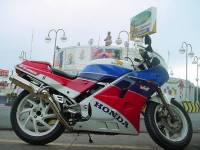 Honda VFR 400R (1988)
Honda VFR 400R (1988)Другие мотоциклы класса Спорт
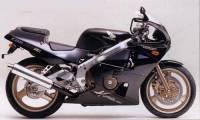 Honda CBR 400R (1987)
Honda CBR 400R (1987)  Honda CBR 400RR (1992)
Honda CBR 400RR (1992)  Honda VF-400F (1982)
Honda VF-400F (1982) 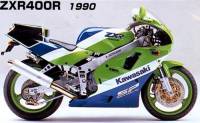 Kawasaki ZXR-400R (1990)
Kawasaki ZXR-400R (1990)  Suzuki GSXR 400R (1995)
Suzuki GSXR 400R (1995) 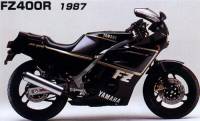 Yamaha FZ-400R (1987)
Yamaha FZ-400R (1987) 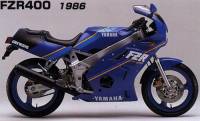 Yamaha FZR-400 (1986)
Yamaha FZR-400 (1986) 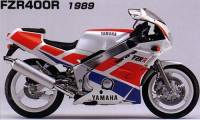 Yamaha FZR-400R (1989)
Yamaha FZR-400R (1989)Honda VFR 400R (1989)
Мнения владельцев
Пока не поступало
Технические характеристики
Двигатель
| Тип двигателя |
: 4-цилиндр., V4,
: 4-х тактный |
| |
| Объем (куб.см) |
: 399 |
| Мощность (л.с./кВт) |
: 59/н.д. |
| Крутящий момент |
: 0 Нм |
Габариты
| Общая длина |
: 0 мм |
| Ширина |
: 0.00 мм |
| Высота по седлу |
: 0.00 мм |
| Сухая масса |
: 0 кг |
|
Технические параметры
| Переднее колесо |
: н.д. |
| Заднее колесо |
: н.д. |
| Топливный бак |
: 18 л |
Расход топлива
(на 100 км) |
: 0.00 л |
| Динамика разгона (0-100 км/ч) |
: 4.00 с |
| Максимальная скорость |
: 215 км/ч |
|
История и особенности модели
NC-30 появился на японском рынке в начале 1989 года и официально продавался плоть до 1994 года, а возможно, и позже, потому что выпущено этих мотоциклов было великое множество. NC-30 - не официальная абривиатура, официальное название этого мотоцикла именно "VFR400R", собственно, именно под этим именем он и известен во всем мире. Или наоборот: если мы говорим о VFR400R, в 90% случаев мы подразумеваем именно NC-30. Honda построила NC-30 с целью захватить сразу несколько благодарных рынков: внутрияпонский, Великобританию, Германию и, по возможности, США. До конца 1990 года в эти страны мотоциклы поставлялись официально, а потом - как "серый импорт". Популярность VFR400R в Японии была настолько велика, что рынок был просто переполнен этими пластиковыми ракетами. Надо заметить, что VFR400R поставлялись в разные страны с учетом специфики правил ТО и тому подобных, например, в Великобританию мотоциклы шли практически без изменений, а в Германию и Австрию - с новыми осветительными приборами и "задушенной" электроникой. Кроме изменений в расцветках, никаких других изменений в конструкции этого мотоцикла за все годы выпуска не произошло. К великому множеству расцветок руку также приложили десятки тюнинговых ателье, которые готовили эти маленькие ракеты для гонок. Соответсвенно, использовались совершенно различные цветовые схемы, самые часто встречаемые: Repsol, Smokin-Joe, Castrol, NSR и Shell Advance. Модели и вариацииИтак, главной задачей для покупателя является определить, для какого рынка подготовленный аппарат ему достался. Обычно, для этого достаточно поднять пассажирское сиденье (точнее то, что им называют) и найти под ним наклейку или стикер с бар-кодом, расположенный на задней части крыла прямо под планкой для номерного знака. Поскольку многие из мотоциклов не были официально поставлены в те страны, откуда их потом привезли в Россию, многие сопутствующие документы и наклейки могут врать. По наклейкам, если они сохранились, можно определить лишь год выпуска в большинстве случаев. Но поскольку многие мото к нам попали не из японских/британских/немецких салонов и аукционов, а с "помоек", наклейкам верить и вовсе не приходится. Отсюда вывод: наиболее ценной информацией для российского пользователя является буква в VIN-е, она ошибаться не может. Буквы для обозначения модельных рядов у Honda используются аналогично американским производителям 80-х годов. (Здесьможно найти много информации по разным VINам.) Как результат, мотоциклы сделанные в 1989 году должны иметь букву "K", 1990 - "L", и так далее. При этом, буквы "I", "O", "Q", "U" и "Z" пропускаются. Некоторые модели имели дополнительные коды, например, для обозначения цветов - буквы латинского алфавита. Развичия от модели к модели - минимальны, но и о них надо знать. Буква "K". Одно из основных технических отличий - использование стандартной вилки Showa, которая ко всему прочему имела устаревший дизайн - "антиклевковую систему". Такие вилки ставились лишь на первые выпуски NC-30, и их не много. Ибо даже на NC-24, предшествующую модель, вилки с "антиклевком" перестали ставить уже в 1988 году. За информацией о различиях между "антиклевковой" и новой, "картриджной" системами обратитесь к статье на Race-Tech.com: Cartridge forks.) Еще одна устаревшая деталь "K" - задний амортизатор. Поздние модели NC-30 были укомплектованы амортизатором Showa с внешним компенсатором, а ранние модели - без него, поэтому эти амортизаторы были гораздо мячге, но и жили меньше. Кроме подвески, "К"-шки обладали маленькими жиклерами во всех 4-х карбюраторах Keihin (110 против 115 в передних и 118 в задних, как в более поздних моделях). Базовые цветовые схемы NC-30 были такими же, как у старшего брата RC-30 - VFR750R: красно-бело-синий комплект. The only other obvious differences between the "K", "L" and "N" models related to the colors of the braking components (i.e., the brake calipers and disc carriers), which went from gold on the "K" to black on the "L" and early "N" and finally to gold on the final "N" variations, the "N-III" and "N-IV". Country-specific differences are minor, but can be significant. UK-specbikes, which were offered in "L" and "M" configurations, had larger, hinged mirrors, oil coolers and MPH speedometers, for example. German-specNC-30s (of which no more than 1000 were ever produced) had larger headlights and hinged mirrors, and possibly a slightly different paint scheme. There were also Austrian-specNC-30s, as indicated in the UK-spec Owners Manual and Microfiche. These bikes were nearly identical to the UK-spec models, but they came with different carbs and KPH speedometers. Export models lacked the home market-s speed restrictions, so they were equipped with higher-reading speedometers. There is some evidence (also from the UK-spec microfiche) that there may also have been an NC-30 version produced for France as well, but European-spec NC-30s were always very expensive and sold poorly, so these models may never have been produced or sold. The following table details the beginning serial and engine numbers for most of the NC-30 production run:
| Year | Code | Region | Beg. Engine #s | Beg. Frame #s | Carb ID #s |
| 1989 | K | Japan | NC13E-1200001 | NC30-1000001 | VDE3A-A |
| 1990-91 | L | Japan | NC13E-1300001 | NC30-1050001 | VDE3D-A |
| 1990-91 | L | U.K. | NC13E-2100007 | NC30-2000006 | VDE3B-A |
| 1990-91 | L | Austria | NC13E-2100009 | NC30-2000009 | VDE3C-A |
| 1991-93 | M | U.K. | NC13E-2200001 | NC30-2100001 | VDE3F-A |
| 1991-93 | M | Austria | NC13E-2200006 | NC30-2100006 | VDE3G-A |
| 1991-93 | M | France | NC13E-220000? | NC30-210000? | VDE3?-A |
| 1991-93 | M | Germany | NC13E-220000? | NC30-210000? | VDE3?-A |
| 1992-on | N | Japan | NC13E-1400001 | NC30-1100001 | VDE3D-B |
Specifications1
| Item | Specifications |
| Dimensions: | Overall length | 1.985m (78.1 in.) |
| Overall width | 705mm (27.8 in.) |
| Overall height | 1.075m (42.3in.) |
| Wheelbase | 1.345m (53.0 in.) |
| Ground clearance | 125mm (4.9 in.) |
| Dry weight | 175kg (385.8 lb.) |
| Curb weight | 192kg (423.3 lb.) |
| Maximum weight capacity | 347kg (765.0 lb.) |
| Frame: | Frame type | Twin-spar aluminum |
| Front suspension | 41mm Showa cartridge forks2 |
| Front wheel travel | 120mm (4.7 in.) |
| Rear suspension | Single-sided swing arm |
| Rear wheel travel | 120mm (4.7 in.) |
| Rear damper | Gas-filled damper with remote reservoir2 |
| Front wheel size | 17x3.5 in. |
| Rear wheel size | 18x4.5 in. |
| Front tire size | 120/60 VR17 |
| Rear tire size | 150/60 VR18 |
| Front brakes | Double floating disc; 4-piston Nissin calipers |
| Rear brake | Single solid disc; 2-piston Nissin caliper |
| Caster angle | 25-deg 20- |
| Trail | 96mm (3.8 in.) |
| Fuel tank capacity | 15 liters (4.0 U.S. gal., 3.5 Imp gal.) |
| Fuel tank reserve capacity | 2.0 liters (0.5 U.S. gal., 0.4 Imp gal.) |
| Engine: | Bore and stroke | 55.0mm x 42.0mm (2.16 in. x 1.65 in.) |
| Displacement | 399 cm? (24.3 cu in.) |
| Compression ratio | 11.3 : 1 |
| Valve train | Gear driven DOHC; 4 valves per cylinder |
| Intake valve opens @ 1mm lift | 15-deg. BTDC |
| Intake valve closes @ 1mm lift | 35-deg. ABDC |
| Exhaust valve opens @ 1mm lift | 35-deg. BBDC |
| Exhaust valve closes @ 1mm lift | 5-deg. ATDC |
| Lubrication system | Forced pressure and wet sump |
| Oil pump type | Trockoid |
| Cooling system | Liquid cooled; dual radiators and cooling fan |
| Air filtration | Paper filter |
| Crankshaft type | Unit-type; 4 main journals; 360-deg. |
| Firing order | #1 @ 90 deg.; #4 @ 270 deg.; #3 @ 90 deg.; #2 @ 270 deg. |
| Cylinder arrangement | 4 cylinders; 90-deg. V |
| Carburetor: | Carburetor type | Constant velocity Keihin; 4 carburetors |
| Throttle bore | 32mm (1.3 in.) |
| Drive train: | Clutch system | Multi-plate, wet |
| Clutch operation | Cable operated |
| Transmission | 6-speeds |
| Primary reduction | 2.117 (34/72) |
| Final reduction (sprockets) | 2.666 (15/40) |
| Drive chain slack | 15-25mm (5/8-1 in.) |
| Drive chain size/links | 525/104 |
| Gear ratio, 1st | 2.928 (14/41) |
| Gear ratio, 2nd | 2.166 (18/39) |
| Gear ratio, 3rd | 1.800 (20/36) |
| Gear ratio, 4th | 1.591 (22/35) |
| Gear ratio, 5th | 1.435 (23/33) |
| Gear ratio, 6th | 1.318 (22/29) |
| Gearshift pattern | Left foot operated return system: 1—N—2—3—4—5—6 |
| Electrical: | Ignition system | Digitalized full transistor ignition |
| Starting system | Electric starter motor |
| Charging system | Triple phase output alternator |
| Regulator/rectifier type | SCR Shorted/triple phase full wave rectification |
| Lighting system | Battery (YTX7A-BS) |
| Lubrication: | Engine oil capacity at draining | 2.4 liters (2.54 U.S. qt., 2.11 Imp. qt.) |
| Engine oil capacity at disassembly | 3.0 liters (3.17 U.S. qt., 2.64 Imp. qt.) |
| Engine oil capacity at oil filter change | 2.5 liters (2.64 U.S. qt., 2.2 Imp. qt.) |
| Recommended engine oil viscosity | SAE 10W-40 |
| Oil pressure at oil pressure switch | 490-588 kPa (5.0-6.0 kg/cmІ, 71-85 psi) @ 5,000 rpm (80 deg.C, 176 deg.F) |
| Fuel system: | Main jets (Front cylinders) | # 122 |
| Main jets (Rear cylinders) | # 120 |
| Slow (idle) jets | # 35 |
| Pilot screw initial opening | 2 turns out |
| Pilot screw final opening | 1/4 turn out |
| Float level | 6.8mm (0.28 in.) |
| Carburetor vacuum difference | Within 40 mmHg (1.6 inHg) |
| Base carburetor (for carburetor synchronization) | No. 2 carburetor |
| Idle speed | 1,300 +/- 100 rpm |
| Throttle grip free play | 2-6mm (0.08-0.24 in.) |
| Clutch system: | Clutch lever free play | 10-20mm (0.4-0.8 in.) |
| Clutch disc thickness | 2.92-3.08mm (0.115-0.121 in.) |
| Clutch disc service limit | 2.8mm (0.110 in.) |
| Clutch plate warpage limit | 0.30mm (0.012 in.) |
| Cooling system: | Coolant capacity (radiators & engine) | 2.1 liters (2.22 U.S. qt., 1.85 Imp. qt.) |
| Coolant capacity (reserve tank) | 0.2 liter (0.21 U.S. qt., 0.18 Imp. qt.) |
| Radiator cap relief pressure | 108-137 kPa (1.10-1.40 kg/cmІ, 16-20 psi) |
| Thermostat begins to open | 80-84 deg.C (176-183 deg.F) |
| Thermostat fully open | 95 deg.C (203 deg.F) |
| Thermostat valve lift | 8.0mm (0.23 in.) min. |
| Wheels/Tires: | Cold tire pressure (driver only, front) | 33 psi |
| Cold tire pressure (driver only, rear) | 33 psi |
| Cold tire pressure (driver & pass., front) | 33 psi |
| Cold tire pressure (driver & pass., rear) | 36 psi |
| Front suspension: | Fork spring free length | 277.3mm (10.92 in.) |
| Fork spring direction | Tighter coils on bottom |
| Fork oil weight | 10W |
| Fork oil level | 122mm (4.8 in.)3 |
| Fork oil capacity | 390cc3 |
| Steering bearing pre-load | 1.0-1.5kg (2.2-3.3 lbs.) |
| Rear suspension: | Shock spring free length | 158.7mm (6.2 in.) |
| Shock spring installed length | 147.7mm (5.81 in.) |
| Nitrogen gas pressure | 98 kPa (142 psi) |
| Brakes: | Brake fluid type | DOT 4 |
| Front brake disc thickness | 4mm (0.16 in.) |
| Front brake master cylinder I.D. | 14.000mm (0.5512 in.) (9/16") |
| Front brake caliper cylinder I.D. (upper) | 32.030mm (1.2610 in.) |
| Front brake caliper cylinder I.D. (lower) | 30.230mm (1.1902 in.) |
| Rear brake disc thickness | 6mm (0.24 in.) |
| Rear brake master cylinder I.D. | 14.000mm (0.5512 in.) (9/16") |
| Rear brake caliper cylinder I.D. | 25.400mm (1.0000 in.) |
| Battery/Charging system: | Reg/rec regulated voltage/amperage | 13.5-15.5v (0-6A) @ 5,000rpm |
| Battery capacity | 12v (6AH) YTX7A-BS |
| Battery charging rate (normal) | 0.7A/5-10 hr. |
| Battery charging rate (quick) | 3.0A/1 hr. |
| Battery voltage | 13.0-13.2v |
| Ignition system: | Spark plug (standard) | NGK ER9EH or ND Y27FER |
| Spark plug (racing) | NGK ER10EH or ND Y31FER |
| Spark plug (cold climate) | NGK ER8EH or ND Y24FER |
| Spark plug gap | 0.6-0.7mm (0.024-0.028 in.) |
| Ignition timing "F" mark | 18-deg. BTDC @ 1,200rpm |
| Advance starts | 1,800rpm +/-200rpm |
| Advance stops | 12,000rpm +/-200rpm |
| Full advance | 37-deg. BTDC +/-2-deg. @ 12,000rpm |
| Lights/Meters/Switches: | Main fuse | 30A |
| Fuse | 20A x 1; 10A x 3 |
| Headlight (high/low beam) | 12v 60/55w (H4)4 |
| Tail/brake light | 12v 5/21w5 |
| License light | 12v 5w6 |
| Position light | 12v 5w7 |
| Turn signal light | 12v 21w8 |
| Instrument light | 12v 1.7w x 5 |
| Oil pressure warning indicator | 12v 1.7w |
| Oil temperature indicator | 12v 1.7w |
| High beam indicator | 12v 1.7w |
| Turn signal indicator | 12v 1.7w |
| Neutral indicator | 12v 1.7w |
| Starting system: | Starter motor brush length | 12-13mm (0.47-0.51 in.) |
Notes:- These specifications pertain mainly to the UK-spec "L" and "M" models; some J-spec differences are noted.
- J-spec "K" models are equipped with Showa damping rod forks and are not equipped with a remote reservoir rear shock.
- For "K" models, fork oil level is 90mm and fork oil capacity is 450cc.
- J-spec is 12v 60/35w.
- J-spec is 12v 5/18w.
- N/A to J-spec bikes.
- J-spec is 12v 1.7w.
- J-spec is 12v 15w.
| | Origin: VSource.org 1999-2003 [Sources: Honda VFR400RL-M Service Manual, Parts Manuals and Microfiche; Honda CBR VFR, Guido Saliger and Thomas Beyer, Art Motor Verlag 1994] |
Honda Part Numbering System
As Used in the Parts CatalogsGeneral parts:XXXXX - XXX - XXX(XX)Function Number
XXXXX- XXX - XXX(XX)Component NumberXXXXX - XXX- XXX(XX)Parts Classification Number(These numbers relate to the Product Code of the first Honda motorcycle model to use a particular part; if the same part is subsequently used on another model, the Parts Classification Number generally remains unchanged. Some of these numbers are listed here. For more information, see the Parts Interchange Infopage.)XXXXX - XXX - XXX(XX)Modification DesignationXXXXX - XXX - XXX(XX)Subcontractor DesignationXXXXX - XXX - XXX(XX)Color Code (if any)(Part number color codes do not necessarily correspond to the Honda motorcycle paint codes listed here; they are keyed to the Honda paint codes listed in the relevant Description section of the Parts Catalog.)
Bolts, nuts and other standard parts:XXXXX - XXXXX - (XX)Function NumberXXXXX- XXXXX - (XX)Type NumberXXXXX - XXXXX- (XX)Dimensions(Dimensions of many common parts are reflected in this section of the part number—see Dimensions below.)XXXXX - XXXXX - (X)(X) ISO Standard Designation (if any)XXXXX - XXXXX - (X)(X) Chemical Surface Treatment (if any)
Common abbreviations:
| ASSY. | Assembly |
| COMP. | Complete |
| R. | Right |
| L. | Left |
| STD. | Standard |
| MM | Millimeter |
| G | Gram |
| T (22T) | Tooth (22 Teeth) |
| A | Ampere |
| V | Volt |
| W | Watt |
| WL | With labelling |
| WOL | Without labelling |
| KPH | Kilometers per hour |
| L.E.D. | Light emitting diode |
| MPH | Miles per hour |
| L (100L) | Link (100Links) |
| A.C. | Alternating current |
| D.C. | Direct current |
| IN. | Intake |
| EX. | Exhaust |
| FR. | Front |
| RR. | Rear |
| HEX. | Hexagonal |
| A.M. | Attaching mark |
| T.M. | Transcript mark |
| C.D.I. | Capacitive discharge ignition |
Dimensions:
| Parts | Example | Interpretation |
| Bolt (screw) | 6 x 12 | 6mm diameter, 12mm length |
| Pin | 8 x 14 | 8mm diameter, 14mm length |
| O-ring | 9.5 x 1.6 | 9.5mm diameter, 1.6mm thickness |
| Oil seal | 14 x 24 x 5 | 14mm inside diameter, 24mm outside diameter, 5mm thickness |
| Tube | 5 x 130 | 5mm inside diameter, 130mm length |
| | Origin: VSource.org 1999-2003 [Source: Various Honda Parts Lists and Microfiche] |









